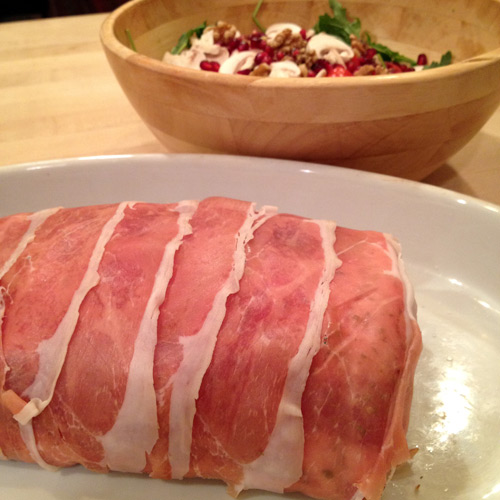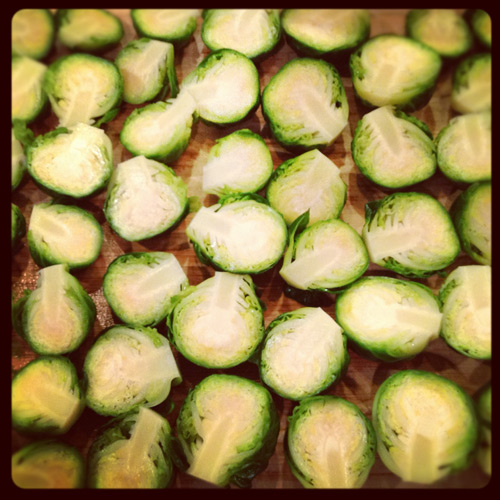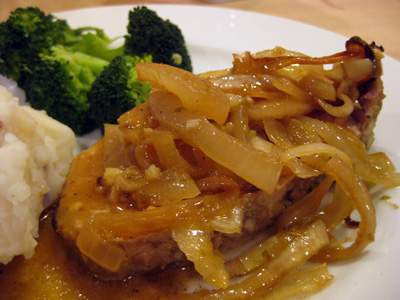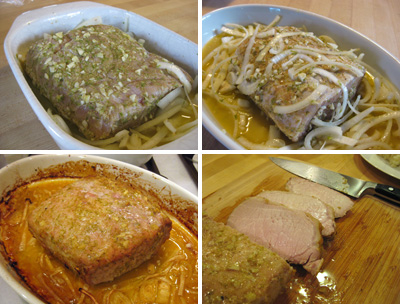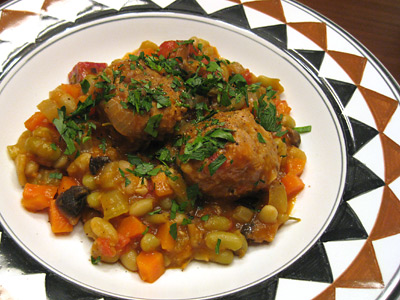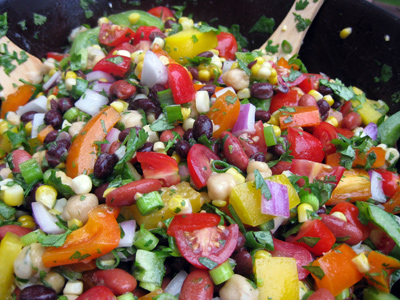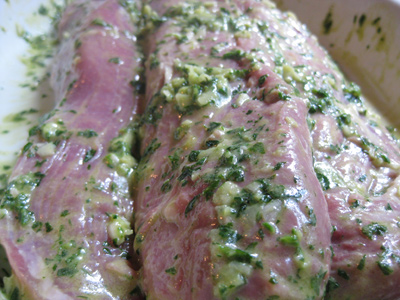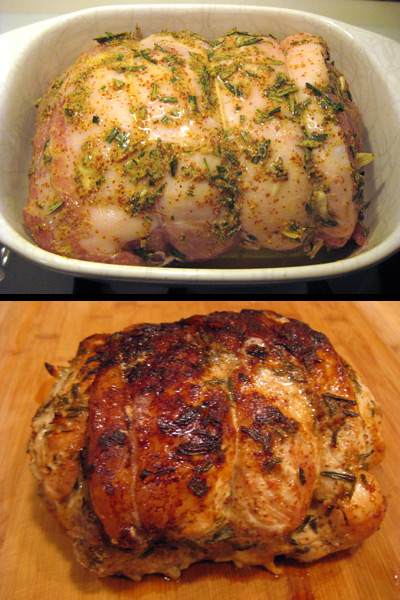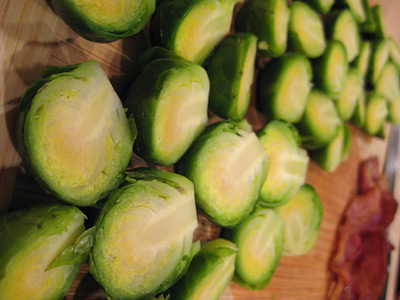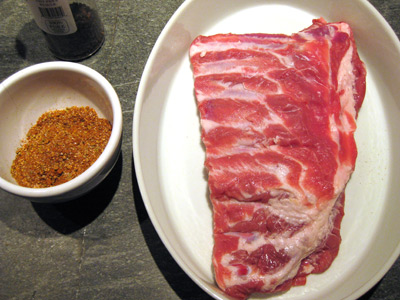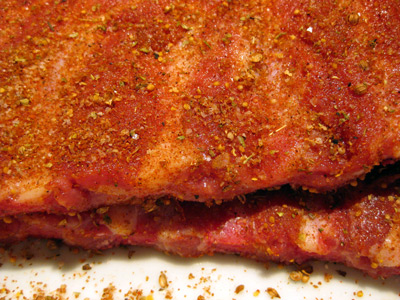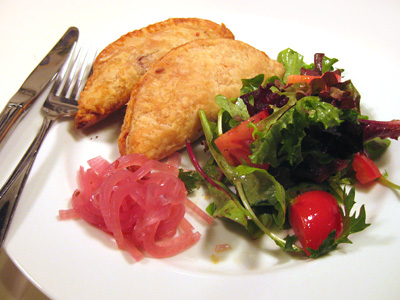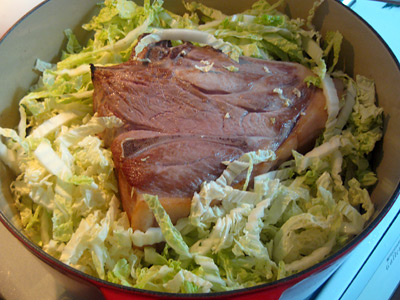
I keep on playing around with pork shoulder braises, and what’s not to love? They make a great meal, and the leftovers can be used in a myriad of ways such as pulled pork sandwiches, stews, chilis, meat pies, etc. The picture above was the only one I had time to grab for this recipe, but I was so happy with it, I wanted to record it up here. I made it the night before, so putting on dinner the next day was a snap, and boy was it good!
Pork Shoulder Braised with White Wine and Napa Cabbage
5 or 6 lb pork shoulder butt, on the bone (preferably Berkshire pork)
1/2 lb slab bacon, 1 to 1.5 inches thick
1/2 napa cabbage, sliced 1/4″ thick
3 medium vidalia or yellow onions, chopped
2 carrots, chopped
2 celery stalks, diced
4 or 5 cloves of garlic, minced
1 1/2 tsp fennel seed
1 tsp coriander seed
bouquet garnis of parsley, winter savory, and 2 bay leaves, wrapped in string
salt and pepper
dry white wine
water
grapeseed oil
Preheat oven to 300F. In a mortar and pestle, coarsely grind the fennel and coriander seed.
Remove the skin from pork shoulder and score the fat. Rub 1 tsp of salt and the ground spices around the pork, let it come to room temperature for 20 minutes or so. Heat a splash of grapeseed oil in a dutch oven until very hot. Sear all sides of the pork and then remove to the side.
Slice the slab bacon 1/2 inch thick and brown it in the dutch oven, then turn the heat down to medium and remove the bacon to the side as well.
Saute the onions until they start to turn translucent, then add in the carrot, celery, garlic, and spices. Place the pork shoulder on top and pour in half a bottle of white wine. Bring the liquid about 1/4 up the side of the pork, adding water if needed. Scatter the slab bacon around, place the bouquet garnis in the pot, and scatter around the napa cabbage. Cover and cook for two hours, then flip the shoulder and cook for another 2 hours.
Remove the pork shoulder to a cutting board and let cool for 15 minutes, then using two forks gently pull the shoulder apart to separate the bones and fat from the meat. Also remove the slab bacon. If you refridgerate the pork and bacon overnight, as I did, then slice any large chunks of pork into half-inch-thick pieces, and sear the meat on both sides in a hot non-stick skillet. Do the same with the bacon, and plate, grinding some coarse salt and pepper onto the pork.
If you are serving the braise immediately, skim the liquid fat off the top of the braised vegetables in the pot. If you put in the fridge overnight, the fat will solidify on the top making it much easier to remove. Re-heat in a pot, not a microwave! Ladle several large spoonfuls into a food processor and blend into your gravy.
With a slotted spoon to drain excess liquid, plate some of braised vegetables next to the meat and serve with a side of your choice — in our case, Lisl made a salad of fresh peas (parboiled and then immediately cooled in ice water), jicama, red onion, and cherry tomatoes, with a lemon juice, olive oil and thyme dressing.
